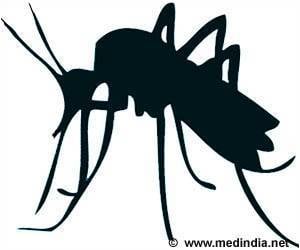Powdered dried leaves from the Artemisia annua plant may be highly effective to treat malaria than purified artemisinin, according to a new study.

Using the dried whole plant, instead of purified artemisinin, could significantly lower the cost of treating malaria, since it would eliminate the need to extract the drug from the plant and purify it, and could greatly expand access to antimalarial therapy, according to Pamela Weathers, co-author of the new study from Worcester Polytechnic Institute (WPI).
"Artemisia can be grown readily in most climates," she said.
"It is a relatively simple process to harvest the leaves, pulverize them, test samples for their potency, measure out doses, and put them in capsules. This could become the basis for local businesses and be a wonderful socioeconomic stimulus in developing countries," she said.
Weathers has been studying the anti-malarial abilities of Artemisia annua for more than two decades. In the latest study, a high-yield cultivar of the plant developed in her lab was administered to mice by her team, led by Stephen Rich, a molecular parasitologist at the University of Massachusetts Amherst.
The effects of the whole plant therapy were compared to the effects of comparable doses of pure artemisinin.
Advertisement
When plant material containing a high level of artemisinin was given to mice, the whole plant was as effective as a high dose of the drug in clearing parasites from the blood. Interestingly, plant material with a low level of artemisinin was as effective in killing parasites as a high dose of the drug, although its effects seemed to wane after 72 hours, suggesting that multiple doses would be necessary to fully treat a malarial infection.
Advertisement
"In our 2011 study, we showed that it takes about 40 times less artemisinin to achieve a comparable blood serum level when the compound is administered in the form of the whole plant," she said.
"This is consistent with the results of earlier studies in which people consumed teas made from whole leaves from Artemisia annua," she said.
Weathers added that the effectiveness of using the whole plant as a therapy is likely a product of the plant's complex biochemistry.
"The leaves of Artemisia contain a host of compounds that are of interest for their apparent but lesser antimalarial abilities," she said.
"These include at least six flavonoids that have been shown to work synergistically with artemisinin to kill malaria parasites. This makes the artemisia leaves a combination therapy all by themselves.
"In fact, we have referred to the whole plant as pACT (plant Artemisinin Combination Therapy), to distinguish it from the Artemisinin Combination Therapies (ACT) that are now recommended for malaria treatment by the World Health Organization," she added.
The study has been recently published online in the journal PLOS ONE.
Source-ANI










